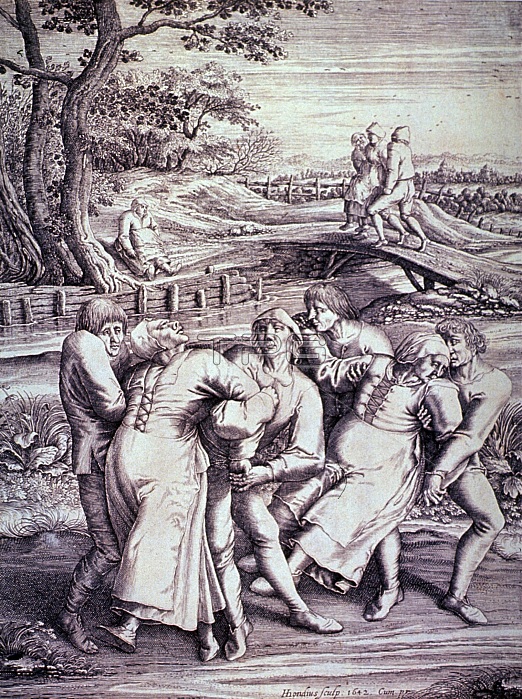
Entitled: "Un Groupe De Danseurs De Saint-Guy (A Group of Dancers of St. Vitus)." Three pairs of men are forcibly moving three insane women along the road; two of the women are held by the arms, the third, in the background, is being carried; a fourth woman is sitting under a tree, and will perhaps suffer the same fate as the others. Dancing mania was a social phenomenon that occurred primarily in mainland Europe between the 14th and 17th centuries. It involved groups of people dancing erratically, sometimes thousands at a time. The mania affected men, women, and children, who danced until they collapsed from exhaustion. One of the first major outbreaks was in Aachen, Germany, in 1374, and it quickly spread throughout Europe; one particularly notable outbreak occurred in Strasbourg in 1518. Affecting thousands of people across several centuries, dancing mania was not an isolated event, and was well documented in contemporary reports. It was nevertheless poorly understood, and remedies were based on guesswork. Generally, musicians accompanied dancers, to help ward off the mania, but this tactic sometimes backfired by encouraging more to join in. There is no consensus among modern-day scholars as to the cause of dancing mania. Engraving by Hendrik Hondius, the Elder, 1642.
| px | px | dpi | = | cm | x | cm | = | MB |
Details
Creative#:
TOP22168444
Source:
達志影像
Authorization Type:
RM
Release Information:
須由TPG 完整授權
Model Release:
N/A
Property Release:
No
Right to Privacy:
No
Same folder images:

 Loading
Loading